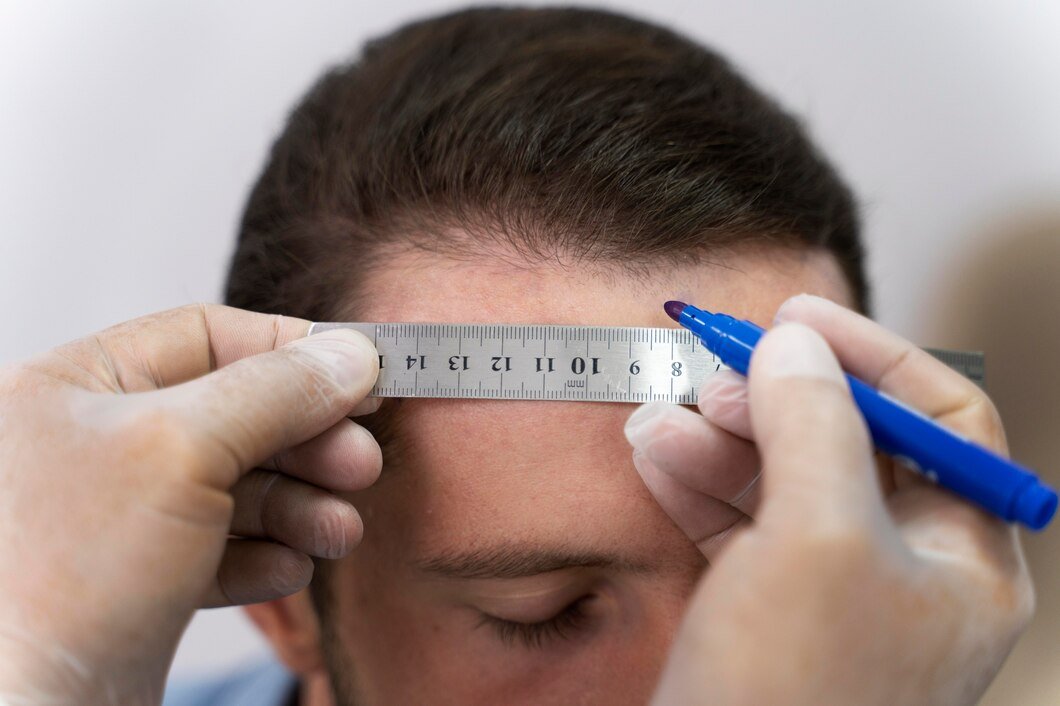
Hair Graft Calculator, Are you considering a hair transplant and want to know more about the number of grafts you might need? A hair graft calculator can be a helpful tool in estimating the number of grafts required for your hair transplant procedure. In this guide, we will walk you through the process of calculating hair grafts and understanding how this affects the cost and results of your hair transplant.
Hair grafts calculator are based on how many grafts can be safely extracted from a donor area. Typically, there are 100 grafts per cm2 on the scalp. Of that, only 40-50% should be extracted for transplantation. However, to calculate the total number of grafts, the surgeon also has to take the hair loss zones and desired density into account. So, for the final calculation, your surgeon might use the following formula:
Number of Grafts = Size of Bald Area(s) x Desired Density x Safely Harvestable Graft.
A hair graft calculator is fairly simple and is based on the Norwood classification system.
Hair Loss Zones:
To understand the hair transplant graft calculator, you need to know the different zones into which the balding regions are divided. These zones play a crucial role in determining the number of grafts you might need for your hair transplant. Here are the main zones:
Hair Loss Zone 1-3: The frontal area consists of zones 1 to 3. If you are suffering from male pattern baldness, your hair loss can start from the frontal area. This area alone requires approximately 2,500 grafts for a full density.
Hair Loss Zone 4: This zone includes the top area. Usually, it needs 1,000-1,500 grafts for full coverage.
Hair Loss Zone 5-7: This is the crown area and requires approximately 2,500 grafts. However, this number can vary depending on the extent of baldness.
Hair Loss Zone 1-7: If you’re experiencing hair loss in zone 1 to 7, you might need 5,000-6,000 grafts, according to the graft calculator. However, you will need 2 sessions of hair transplant surgery for this.
A graft calculator is one of the best hair transplant calculators which is used for hair transplant and it is a helpful tool to explore when you’re looking into different transplantation clinics. There are some clinics that determine the total price of hair transplants depending on the number of grafts that you will need. Through the hair graft calculator or estimator, you’re able to pinpoint the areas on your head that are balding and know the total amount of money that would be required to restore hair in those zones. Nowadays online hair transplant calculators are used by clients to know how many grafts are used in his or her hair transplants, on the basis of which the client’s planning of their hair transplant. Our clinic is awarded as one of the best hair transplant clinics in India.
Do Men And Women Need The Same Number Of Hair Grafts?
Males may lose their hair in the frontal region, the top, and the crown. You might’ve noticed pattern baldness in a lot of males through their receding hairline. It is quite common. However, it’s not always the case. Some males retain their hairline and start losing their crown hair. Women, on the other hand, usually start losing their hair from the top, which leaves them with a long, wide bald spot. In time, they have a very visible separation line due to the thinning of the hair and decreasing hair density.
Also, females can experience diffuse hair loss or lose hair on the top of their heads while retaining their hairline. If it’s the former, hair transplant cannot take place and if it’s the latter, women might need fewer grafts than men since their hairline is intact. Moreover, your age plays an important role in the severity of hair loss. A younger person will require relatively fewer grafts than someone who’s been experiencing hair loss for decades. Hair loss takes place gradually. You may start experiencing hair thinning at first, and then you might notice a decrease in the density over time. It doesn’t happen overnight.
Hair loss patterns are unique. Some people may only experience thinning and retain their hairline, while others lose all their top hair while losing hair in the donor area as well. It’s the donor area that determines the suitability of a patient for a hair transplant. Before the surgery, your surgeon will check the donor area so that you have realistic expectations. If the donor area is full and strong, you’ll have more grafts for transplantation. But since hair loss on the crown and hairline requires many grafts, you might not achieve a very high hair density. There are two options in this case: You could just focus on one bald area and achieve a good density in that area, leaving other bald areas for a second session. The grafts are spread on the entire scalp to achieve a good enough coverage. However, in the latter case, high density is not possible. This phenomenon is referred to as the density-to-coverage ratio. The route your surgeon chooses will take your needs and desires into consideration.
Would I Need A Second Hair Transplant Surgery?
If your hair loss is severe, you might need over one session to cover your bald spots. However, your density might decrease despite the surgery if your hair loss continues. Your surgeon will check your hair transplant result during the consultation and inform you if this is the case. You can always come for a second hair transplant. We offer a returning patient discount, so you can avail of the surgery at a lower cost.
© 2023 Cosmetica India. All Right Reserved. Designed & Developed by Dart Digital Agency